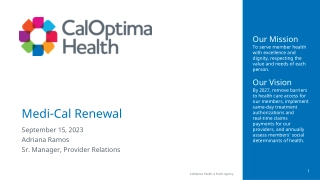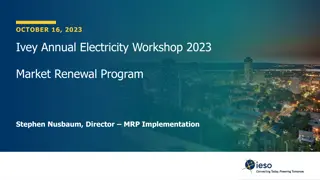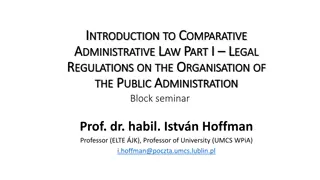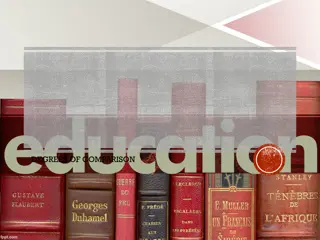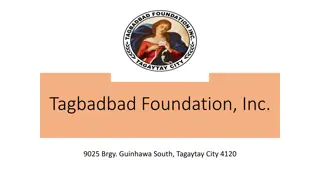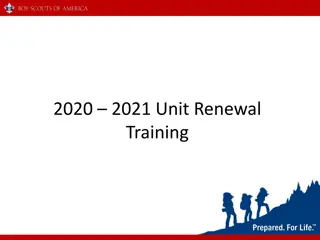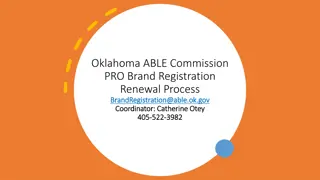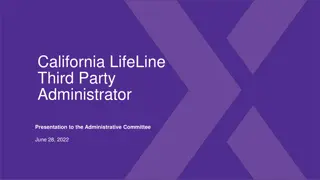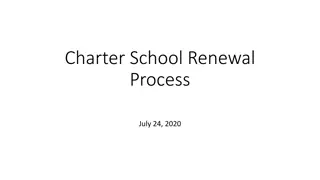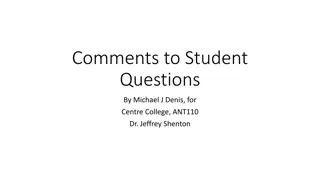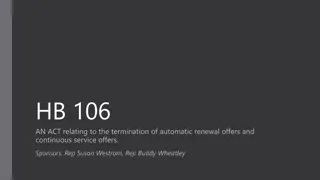
Comparisons of Renewal Strategies: Survival, Healing, Rebirth and Beyond
Explore the concepts of renewal strategies as avenues for survival, healing, and rebirth in organizational settings. Delve into narratives, identity, and typologies to understand how crises can lead to transformation and growth. Discover various types of renewal, from innovation to comeback stories, that shape the future of organizations.
Download Presentation

Please find below an Image/Link to download the presentation.
The content on the website is provided AS IS for your information and personal use only. It may not be sold, licensed, or shared on other websites without obtaining consent from the author. If you encounter any issues during the download, it is possible that the publisher has removed the file from their server.
You are allowed to download the files provided on this website for personal or commercial use, subject to the condition that they are used lawfully. All files are the property of their respective owners.
The content on the website is provided AS IS for your information and personal use only. It may not be sold, licensed, or shared on other websites without obtaining consent from the author.
E N D
Presentation Transcript
COMPARISONS OF RENEWAL STRATEGIES AS SURVIVAL, HEALING, REBIRTH AND BEYOND Joel Iverson, University of Montana Steven Venette, University of Southern Mississippi
RENEWAL Organizational crisis creates opportunity to learn and engage in change Organizational Learning Ethical Communication Prospective Vision Compelling Rhetoric
ORGANIZATIONAL RENEWAL Renewal fresh sense of purpose or direction for an organization. Renewal is Narrative told and enacted Renewal is also about the identity of the organization
RENEWAL NARRATIVES Narratives of Renewal (Seeger & Sellnow, 2016) Crisis creates narrative space and a deficit of meaning Forward-looking Narrative can be evaluated in two ways: Probability, Coherence and Fidelity are traditional, but have meet sharp criticism (Rowland, 1987; Warnick, 1987) Identification -the logic behind fidelity, etc. (McClure, 2009) Fisher (1984) states that the operative principle of narrative rationality is identification rather than deliberation (p. 9). Narratives are co-constructions of meanings created by texts and audiences (McClure, p. 199).
RENEWAL AND IDENTITY Narrative identification extends and transforms older narratives to create new ones Through the process of identification, narratives constitute stories by which we live and make our realities and choices (McClure, p. 197) Narratives of Renewal enact the organization s identity past, present and moving forward Organizational identity unfolds over time as organizations and others tell stories Identity a storied self in narrative-identity interplay Renewal is narrative identity Still strongly grounded in actions or practices of the organization
TYPOLOGIES Classifying by types - makes theoretical differentiations that essentialize differences 2 approaches to develop typology Emergent categories listing differences based on cases Theory Driven look at the arc of identity that includes pre- crisis, crisis and post-crisis identity
VARIOUS TYPES OF RENEWAL 1. Innovation overcoming a crisis through inventive forward thinking Schwann s Red Cross Liberty Fund 2. Rebirth the Phoenix rising from the ashes as a new and vital organization Cole Hardwoods, Malden Mills literally burned and rebuilt 3. Comeback Company downfall or KO and resurgence Apple when Jobs returned? NASA (Challenger) 911 airline changes (door locks)
4. Exorcism Removal of a bad element or scapegoating to allow renewal. Ding Dong, the witch is dead. Fed Ex, Dominoes hoax or United Way after CEO was taking funds. The Battle of Jutland 5. Healing - Organizational healing involves immediate repair and subsequent strengthening Powley, 2012 Healing is necessary when the identity of the past cannot or should not be forgotten easily by stakeholders 6. Post-Traumatic Growth similar to healing, but the harms and injury as trauma do not go away, but coping and growth are still possible Renewal after a mass shooting, sexual assault 7. Heroes - We have performed well; we have new heroes Could we call this the Avengers or Hero or Superhero narrative? Tylenol (Burke) Chrysler (Iaccoca)
8. Fitness or Right-Sizing - Confirmation of policies and procedures. We have burned out the undergrowth; Many food recall cases fit the "policies and procedures" idea -IBM might be a case of "right-sizing" 9. Thanksgiving - God is good; religious framing 10.Community Building -Value of friends and relationships Social Capital and Renewal (Caitlyn Lewis, 2016) -William Carey Tornado
LIST AS TYPOLOGY Proves a variety of renewal approaches exist Work to differentiate renewals and offers insight for meaning Need to be more systematic in categorizing the renewal narratives Identity offers one option Pre-Crisis, Crisis, Post-Crisis
IDENTITY PHASE TYPOLOGY Pre-Crisis Identity -All on our list allow for a positive organizational identity. Even exorcism, healing and PTG have the potential to have a positive image bad things happen to good organizations. We can imagine the possibility of other renewal narratives that involve an evil organization 12. razed and rebuilt wiping an infestation of corruption out of a government organization.
Crisis Identity During the crisis, blame, mortification, scapegoating have an impact. The crisis may be the fault of the organization through neglect or greed, leading to a difficult path for renewal. Georgia Peanut Co would have needed an exorcism or more. Crisis Identity, like pre-crisis could be good or bad, but overcoming a negative identity during crisis action will require more repair, or a 13. Conversion to move past it and not have renewal seen as a strategic ploy rather than genuine.
Post-Crisis Identity Renewal requires enacting a forward- thinking, learning, genuine identity. Each of the renewal types we list so far have a newer better selves going forward. One key difference is how they go forward relative to the past, finishing the story arc. The thought exercise of a negative post-crisis identity, but still be considered renewal is odd at best, but a destructive organization terrorist or hate group (false differentiation) that experienced a crisis and is back to their professed destructive ways could experience this. We do not know what to call it. 14. Rise of the Evil Undead Zombies? They re Back.
CONCLUSIONS Types of renewal exist. Developing a typology (much like best practices) is a work in progress Narrative Identity is helpful by tracking the progress of the renewal discourse Renewal retains its characteristics Better understand how to analyze renewals Should the list be shrunk to a few general categories or expanded?

